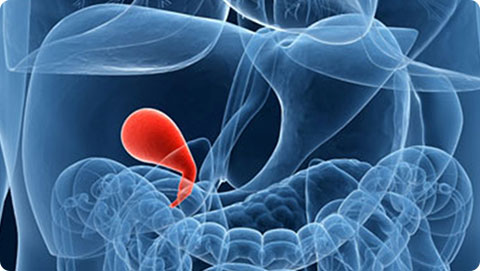The gallbladder is a tiny, pear-shaped organ that is situated on the right side of an individual’s abdomen, just beneath the liver. It stores the bile, a digestive fluid that the liver produces. Gallbladder and bile duct cancers are rare occurrences but the chances of them being cured are high only if they are detected at an earlier stage. Gallbladder cancer is hard to diagnose as it often shows no particular signs or symptoms. Also, it is easier for the malignancy to grow without detection owing to the relatively hidden nature of the gallbladder.
Symptoms of Gallbladder Cancer
The symptoms of gallbladder cancer include:
- Nausea
- Fever
- Abdominal bloating
- Vague abdominal symptoms
- Non-specific complaints such as weight loss and anorexia
- Abdominal pain, specifically in the upper right portion
- Skin and the whites of the eyes attain a slight yellow tinge
Causes of Gallbladder Cancer
When the healthy cells of the gallbladder develop changes or mutations in their DNA, these mutations result in the uncontrolled growth of cells. They continue to live while other cells normally die. The accumulating cells create a tumour that can grow beyond the gallbladder and move to other body organs.
Asia has a high incidence of gallbladder cancer. It is more frequently diagnosed in Korean males and Pakistani and North Indian females.
The various risk factors of this cancer include chronic inflammation in the gallbladder, gallstones, bacterial infections such as salmonella typhi, helicobacter bilis, salmonella paratyphi, and parasitic infections with clonorchis and opisthorchis.
Primary sclerosing cholangitis, which is a chronic fibro inflammatory syndrome of the biliary tract is strongly correlated with gallbladder cancer as well.
Occupational exposures to heavy metals such as cadmium and nickel may also cause this disease. A BMI of more than 30 and high body fat mass can also contribute to the occurrence of this cancer. The risk of gallbladder cancer is also increased by genetics along with a family history of gallbladder stones.
Gallbladder polyps are typically seen in almost 5% of adults. These do not have any symptoms and are incidentally discovered during the ultrasound examination. Large polyps (> 1 cm size), solitary polyp, polyp growth, and associated gallstones warrant a procedure known as cholecystectomy.
Few developmental abnormalities like the anomalous junction of the pancreatic biliary duct are also a risk factor for cancer. Prophylactic cholecystectomy is considered to be the best line of treatment for these patients.
Diagnosis
An ultrasound of the abdomen can help recognize small polyps, porcelain gallbladder, or wall thickness of the gallbladder. Currently, EUS is the definitive modality for diagnosing gallbladder cancer.
CT scans can also help in recognizing any spread to the lymph nodes, liver involvement (or) metastasis.
Treatment
Removal of the gallbladder or cholecystectomy is the definitive treatment for this cancer. A satisfactory outcome depends on early diagnosis and surgical resection.
Despite having potential for cure, only less than 10% of patients have surgically resectable tumors at diagnosis. So, awareness and identification of early lesions play a crucial role and helps in providing a potential cure for such diseases.
In order to identify any early lesions, an annual ultrasound of the abdomen is recommended for everyone.


